Air pollution in south Etobicoke is part of a regional problem; City official recommends public transit advocacy
As a person who loves to drive, I was thoroughly intrigued to learn about the recent study of air pollution in south Etobicoke.
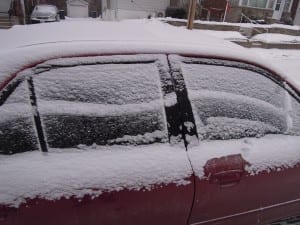
This is my car, a 2001 Mazda Protege. It has over 205,000 km on the odometer. Vaughn Tanaka of Jim Morita Inc. has looked after the car for many years. Jaan Pill photo
Cars and trucks: What can be done?
With regard to cars and trucks, some of the text from Tamara Shephard’s Jan. 16, 2014 Etobicoke Guardian article, discussed in a recent post, stays in mind:
“Cars and trucks are far and away the greatest contributors of these five pollutants,” said Christopher Morgan with the city’s Environment and Energy Office. “Benzene and benzo(a)pyrene are clearly from transportation sources. PM10 is from cars and trucks: tires and brakes, not tailpipes, PM2.5 is from the tailpipes of cars and trucks.”
Neighbourhoods adjacent to Hwy. 427 were found to have worse air quality than those flanking the Gardiner because Hwy. 427 has a greater volume of traffic, particularly trucks, Morgan reported.
What can be done?
Morgan urged residents to advocate for better transportation emission standards and cleaner natural gas to improve the community’s air quality, which is not markedly worse than other areas of the city, Toronto Public Health officials reported.
“We need to work with the provincial ministries — environment, health and transportation — and the city divisions — Toronto Public Health, city planning, TTC and transportation regarding vehicle emissions, particularly trucks,” Morgan said.
“We need to go to those provincial ministries and convince them to advocate the issue to the feds by talking with other provinces. We need to connect with our major Canadian cities that all experience similar issues. Collectively, we need to advocate for improved emissions standards across Canada and North America. It will be difficult, and it will take time.”
Actions residents could take include: reducing natural gas consumption by cleaning their furnace annually, upgrading their home’s insulation to use less heating fuel and lowering the thermostat setting; driving less and using public transit or alternate modes of transportation, such as cycling, and undertaking green initiatives at home and in schools.
[End of excerpt]
The bottom line is that we are dealing with a regional problem.
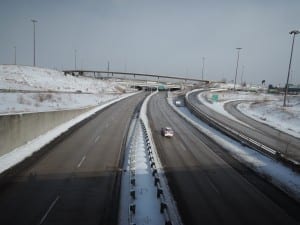
View entering Hwy. 427 as you leave Brown’s Line travelling north from Long Branch. On the horizon you can see ramps connecting with the Gardiner Expressway. Jaan Pill photo
For my part, I plan to become a member of the Toronto Environmental Alliance and contribute financially to its work. I’m also delighted to be using the GO Train, rather than my car, to attend classes that I’m currently taking at Ryerson University. When the weather improves, I look forward to getting a lot of exercise along the Lake Ontario shoreline on my bicycle.
Transportation and inequality
A Jan. 27, 2014 article which originally appeared at the US-based National League of Cities website is entitled: “To Fix Inequality, Think Local.” I learned of the article from a tweet by @urbandata. The tweet read, in part: “To fix #inequality, think locally (and particularly about transportation).”
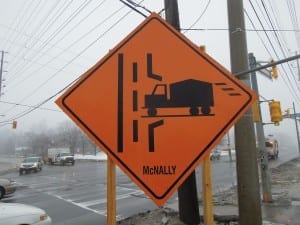
The Jan. 16, 2014 Etobicoke Guardian article about air quality in south Etobicoke notes that trucks are a major pollution source on Hwy. 427. Jaan Pill photo: The location is at the corner of Dixie Road and Lakeshore Road East in Mississauga, where work is under way on the Hanlan Feedermain Project, which according to government officials (involved with the Lakeview Waterfront Connection Project) will lead to an anticipated increase in local truck traffic of under five percent beyond the current levels.
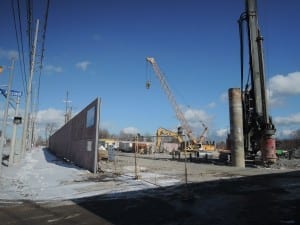
Jan. 29, 2014 photo shows view looking east toward Long Branch from the corner of Dixie Road and Lakeshore Road East in Mississauga. Work is now under way here and elsewhere along Dixie Road on the Hanlan Feedermain Project. As an August 2013 interview with Mississauga Ward 1 Councillor Jim Tovey at this website notes, soil excavated from the feedermain project will serve as landfill to extend the shoreline at Lakeview, south of the corner of Dixie and Lakeshore, as a key element of the Lakeview Waterfront Connection Project. Jaan Pill photo
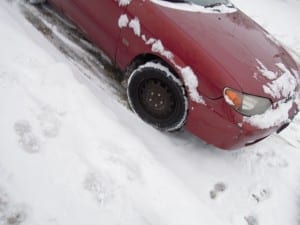
This 2001 Mazda, with over 205,000 km on the odometer, is kept in great operating condition thanks to Vaughn Tanaka of Jim Morita Inc., which I’ve talked about elsewhere at this website. We learned about Jim Morita Inc. work through neighbours on our street years ago. Jaan Pill photo
Updates
A March 30, 2014 Planetizen article is entitled: “Air Pollution Kills […] 7 Million Annually.”
A May 22, 2014 metronews.ca article is entitled: “Yes, that traffic jam really is killing you.”
A June 18, 2014 Reuters article is entitled: “Air pollution linked to cognitive decline in later years.”
In the June 12, 2014 Provincial election in Etobicoke-Lakeshore, public transit was among the major issues under discussion.
An April 1, 2015 Globe and Mail article is entitled: “Air pollution may be related to anxiety levels in women: study.”
A July 20, 2015 CBC article is entitled: “Canada can’t afford complacency on air pollution: CMAJ editorial: Air pollution a ‘silent killer’ that can exacerbate other health conditions.”

Leave a Reply
Want to join the discussion?Feel free to contribute!